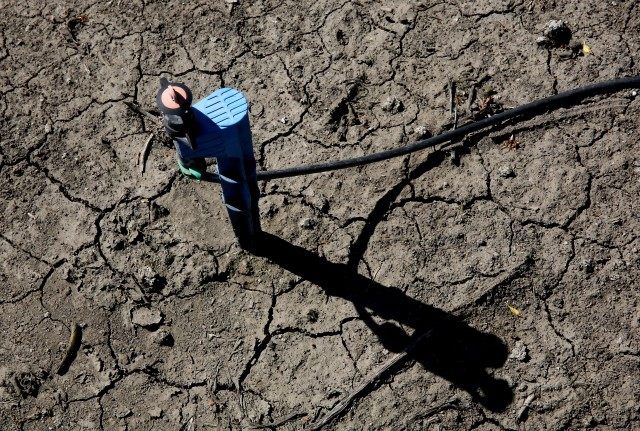Sacramento liberals have tried to starve agriculture during California’s ongoing drought through water restrictions. But farmers could increase production, while decreasing water usage by 25,000 gallons per acre, if they increase the concentration of organic matter in the soil by one percent.
One of California’s nicknames is the “Horn of Plenty,” because its $37.5 billion in annual agricultural sales is more than any other state in the nation. Due to a combination of soil and climate, California’s output per acre is 50 percent higher than neighboring states.
California dominates the production of American fruits, vegetables and nuts. State farmers generate 99 percent of walnuts in the U.S., 97 percent of kiwis, 97 percent of plums, 95 percent of celery, 95 percent of garlic, 89 percent of cauliflower, 71 percent of spinach, and 69 percent of carrots and the list goes on and on.
Residents usually cheer the state’s agricultural prowess. But tension flares during cyclical droughts, because agriculture accounts for 80 percent of the human use of water in California.
As Breitbart News reported in “Left wants to Hijack Cal Drought ‘Crisis’ to Cancel Water Rights,” California’s liberal legislature, whose power base in in the larger cities wants to destroy all agricultural “riparian water rights” that are included in source of title to property “abutting” the watercourse of the state’s natural rivers and streams.
The rights pre-date the legislature’s regulation of “Appropriative Rights” for “unallocated water” in 1914. Despite a 70 percent population growth to 38 million today, California has not built a dam or major reservoir during the last 37-year period.
Without building any “diversion and storage” infrastructure to create more “unappropriated” water, each California drought cycle becomes more severe and the overdrawing of groundwater supplies becomes more serious.
But Tony Rolfe, a California state soil scientist with the U.S. Agriculture Department’s Natural Resources Conservation Service told National Public Radio that better management of the carbon content of the California soil could be better way to conserve agricultural water use.
Healthy soil is rich in organic matter called humus that emerges from decayed plant and animal matter, and which acts as a sponge to hold billions of microbes that help plants thrive. The richer the “dark” carbon content, the greater the sponge effect, and the less that water is needed to spur plant growth.
According to Rolfe: “If you increase soil organic matter by 1 percent, you can save 25,000 gallons of water per acre from being used.” He added, “And the more you can store organic carbon in the soil, the less carbon dioxide is released, which also helps with climate and carbon sequestration.”
Rolfe believes that creating healthy soils to retain water makes more sense than investing in expensive solutions like desalination plants, recycling wastewater, imposing water-use restrictions, letting lawns go dry and drip irrigation techniques.
Over-tilling and not rotating crops are the top reasons for soil erosion. To compensate for soil degradation, farmers around the world tend to supplement carbon by adding fertilizer, depending on the health of the soil.
According to Rattan Lal, a veteran soil scientist at Ohio State University, “China uses 400–500lb of fertilizer per acre, India uses 100lb per acre and the U.S uses 150–200lb per acre.”
Lal estimates that healthy soils have organic carbon in the root zone of about 1.5 to 2 percent. If the carbon is reduced, the soil’s ability to hold water is also reduced. He suggests planting cover crops in the off-season and leaving root residues after harvesting, to feed the soil. That, he says, will create more productive soil that uses less water.

COMMENTS
Please let us know if you're having issues with commenting.